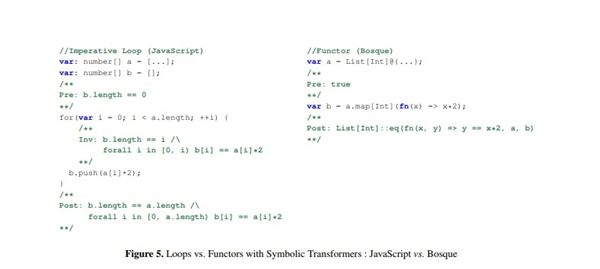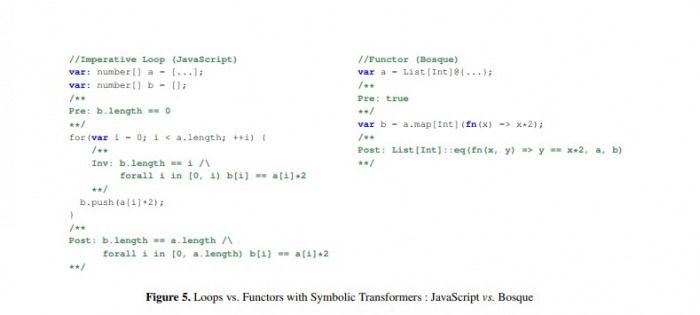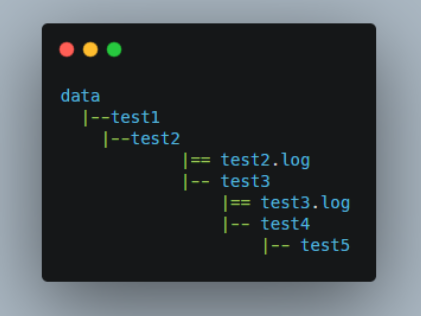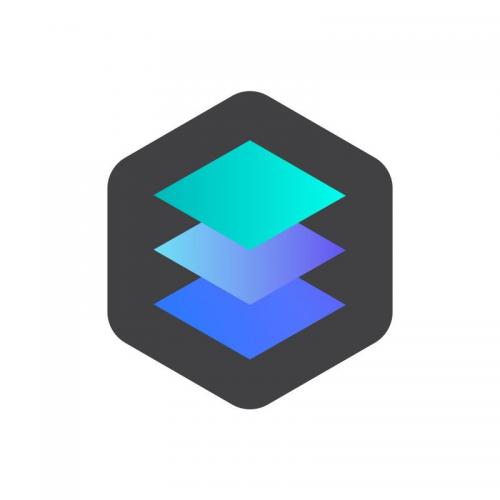学习Go语言微服务开发的终极指南
 发布于2024-11-13 阅读(0)
发布于2024-11-13 阅读(0)
扫一扫,手机访问
Go语言微服务开发实践:从入门到精通
微服务架构风格已经成为现代软件开发的热门话题,它的可扩展性、灵活性和独立部署的特点受到了众多开发者的青睐。而Go语言作为一种强大的并发编程语言,也成为了微服务开发的首选语言之一。本文将介绍Go语言微服务开发的实践方法,并给出具体的代码示例,帮助读者从入门到精通。
一、了解微服务架构概念
在开始Go语言微服务开发之前,我们需要先了解微服务架构的概念和特点。微服务架构是一种将单个应用程序拆分为一组小型、自治的服务的软件开发方式。这些服务可以独立开发、部署和扩展,并通过轻量级的通信机制(如HTTP、RPC等)进行通信。每个微服务只负责完成一个特定的业务功能,通过互相协作完成整个应用程序的功能。
二、选择合适的Go框架
在Go语言微服务开发中,选择合适的框架可以提高开发效率和代码质量。Go语言社区有很多优秀的开源框架可供选择,如Go kit、Micro等。这些框架提供了一系列工具和组件,用于简化微服务的开发、部署和监控。
以Go kit为例,它是一个微服务工具包,提供了服务发现、负载均衡、容错、指标收集等功能。下面是一个使用Go kit构建微服务的示例代码:
package main
import (
"context"
"fmt"
"net/http"
"github.com/go-kit/kit/endpoint"
"github.com/go-kit/kit/log"
"github.com/go-kit/kit/transport/http"
)
func main() {
ctx := context.Background()
svc := NewHelloService()
endpoint := MakeHelloEndpoint(svc)
handler := http.NewServer(ctx, endpoint, DecodeHelloRequest, EncodeHelloResponse)
http.Handle("/hello", handler)
log.Fatal(http.ListenAndServe(":8080", nil))
}
type HelloService interface {
Hello(name string) string
}
type helloService struct{}
func (hs helloService) Hello(name string) string {
return fmt.Sprintf("Hello, %s!", name)
}
func NewHelloService() HelloService {
return helloService{}
}
type helloRequest struct {
Name string `json:"name"`
}
type helloResponse struct {
Message string `json:"message"`
}
func MakeHelloEndpoint(svc HelloService) endpoint.Endpoint {
return func(ctx context.Context, request interface{}) (interface{}, error) {
req := request.(helloRequest)
msg := svc.Hello(req.Name)
return helloResponse{Message: msg}, nil
}
}
func DecodeHelloRequest(ctx context.Context, r *http.Request) (interface{}, error) {
var req helloRequest
if err := json.NewDecoder(r.Body).Decode(&req); err != nil {
return nil, err
}
return req, nil
}
func EncodeHelloResponse(ctx context.Context, w http.ResponseWriter, response interface{}) error {
return json.NewEncoder(w).Encode(response)
}以上示例代码使用Go kit构建了一个简单的Hello微服务,提供了一个/hello的HTTP接口用于接收名字,然后返回相应的问候语。其中,HelloService是服务接口,helloService是服务实现,MakeHelloEndpoint函数用于创建服务的endpoint,DecodeHelloRequest函数用于解析请求参数,EncodeHelloResponse函数用于编码响应结果。
三、实践微服务的服务发现与负载均衡
在微服务架构中,服务发现和负载均衡是重要的组成部分。服务发现用于自动发现和注册微服务的实例,负载均衡用于按照一定的策略将请求路由到不同的服务实例。
Go语言社区有很多成熟的服务发现和负载均衡库可供选择,如Consul、Etcd、Nacos等。这些库提供了丰富的功能和易用的API,可以轻松地集成到Go微服务中。下面是一个使用Consul进行服务发现和负载均衡的示例代码:
package main
import (
"context"
"fmt"
"net/http"
"os"
"os/signal"
"syscall"
"time"
"github.com/go-kit/kit/log"
"github.com/hashicorp/consul/api"
"github.com/olivere/elastic/v7"
"github.com/olivere/elastic/v7/config"
)
func main() {
logger := log.NewLogfmtLogger(os.Stderr)
// 创建Consul客户端
consulConfig := api.DefaultConfig()
consulClient, err := api.NewClient(consulConfig)
if err != nil {
logger.Log("err", err)
os.Exit(1)
}
// 创建Elasticsearch客户端
elasticConfig, _ := config.ParseENV()
elasticClient, err := elastic.NewClientFromConfig(elasticConfig)
if err != nil {
logger.Log("err", err)
os.Exit(1)
}
// 注册服务到Consul
err = registerService(consulClient, "my-service", "http://localhost:8080")
if err != nil {
logger.Log("err", err)
os.Exit(1)
}
// 创建HTTP服务
svc := &Service{
Logger: logger,
ConsulClient: consulClient,
ElasticClient: elasticClient,
}
mux := http.NewServeMux()
mux.HandleFunc("/search", svc.SearchHandler)
server := http.Server{
Addr: ":8080",
Handler: mux,
}
go func() {
logger.Log("msg", "server started")
server.ListenAndServe()
}()
// 等待信号
ch := make(chan os.Signal, 1)
signal.Notify(ch, syscall.SIGINT, syscall.SIGTERM)
<-ch
// 注销服务
err = deregisterService(consulClient, "my-service")
if err != nil {
logger.Log("err", err)
os.Exit(1)
}
// 关闭HTTP服务
ctx, cancel := context.WithTimeout(context.Background(), 5*time.Second)
defer cancel()
server.Shutdown(ctx)
logger.Log("msg", "server stopped")
}
// 注册服务到Consul
func registerService(consulClient *api.Client, serviceName, serviceAddr string) error {
registration := new(api.AgentServiceRegistration)
registration.ID = serviceName
registration.Name = serviceName
registration.Address = serviceAddr
registration.Port = 8080
check := new(api.AgentServiceCheck)
check.HTTP = fmt.Sprintf("http://%s/health", serviceAddr)
check.Interval = "10s"
check.Timeout = "1s"
check.DeregisterCriticalServiceAfter = "1m"
registration.Check = check
return consulClient.Agent().ServiceRegister(registration)
}
// 注销服务
func deregisterService(consulClient *api.Client, serviceName string) error {
return consulClient.Agent().ServiceDeregister(serviceName)
}
type Service struct {
Logger log.Logger
ConsulClient *api.Client
ElasticClient *elastic.Client
}
func (svc *Service) SearchHandler(w http.ResponseWriter, r *http.Request) {
// 实现具体的搜索逻辑
}
以上示例代码使用Consul进行服务注册和发现,使用Elasticsearch进行数据搜索。其中,registerService函数用于将服务注册到Consul,deregisterService函数用于注销服务,SearchHandler函数用于处理搜索请求。
结语
本文介绍了Go语言微服务开发的实践方法,并给出了具体的代码示例。通过学习和实践这些示例代码,读者可以逐步掌握Go语言微服务的开发技巧和最佳实践。希望本文对读者能够有所帮助,加深对Go语言微服务开发的理解和应用。
产品推荐
-

售后无忧
立即购买>- DAEMON Tools Lite 10【序列号终身授权 + 中文版 + Win】
-
¥150.00
office旗舰店
-

售后无忧
立即购买>- DAEMON Tools Ultra 5【序列号终身授权 + 中文版 + Win】
-
¥198.00
office旗舰店
-

售后无忧
立即购买>- DAEMON Tools Pro 8【序列号终身授权 + 中文版 + Win】
-
¥189.00
office旗舰店
-

售后无忧
立即购买>- CorelDRAW X8 简体中文【标准版 + Win】
-
¥1788.00
office旗舰店
-
 正版软件
正版软件
- 解答常见问题:Python 字典的疑难解决
- 1.如何在字典中添加键值对?在字典中添加键值对,可以使用以下两种方法:#方法一:使用方括号my_dict["key"]="value"#方法二:使用update()方法my_dict.update({"key":"value"})2.如何在字典中查找键?在字典中查找键,可以使用以下两种方法:#方法一:使用in运算符if"key"inmy_dict:print("Keyexists")else:print("Keydoesnotexist")#方法二:使用get()方法value=my_dict.get("
- 8分钟前 Python 数据类型 运算符 字典 键值对 0
-
正版软件
- 在SQL中如何使用WHERE语句
- SQL中WHERE的用法,需要具体代码示例SQL(StructuredQueryLanguage)是一种用于管理关系数据库管理系统(RDBMS)的标准化语言。在SQL中,WHERE子句用于过滤SELECT语句返回的数据。通过WHERE子句,我们可以根据特定的条件选择需要的数据行。WHERE子句的一般语法如下:SELECTcolumn1,column2
- 18分钟前 where子句 where条件 SQL过滤 0
-
 正版软件
正版软件
- 揭秘PHP BCMath:实现高精度计算的神奇能力
- PHPBCMath扩展是一个强大的工具,它允许开发者进行任意精度的计算。这对于需要处理大数字或小数的应用程序来说非常有用。BCMath扩展提供了许多函数,可以用于执行各种数学运算,包括加法、减法、乘法、除法、平方根和三角函数。为了使用BCMath扩展,您需要在php脚本中使用bcscale()函数来设置小数点后的位数。默认情况下,小数点后的位数为0,这意味着所有计算都将被四舍五入到最接近的整数。要设置小数点后的位数,您可以使用以下语法:bcscale($scale);其中,$scale是要设置的小数点后的
- 33分钟前 PHP 任意精度计算 BCMath 0
-
 正版软件
正版软件
- 优雅处理网络数据:Python 中的HTTP请求技巧
- 写在前面python是当下最为流行的编程语言之一,它在爬虫、自动化测试、数据分析等领域有着广泛的应用。Http请求是WEB应用开发的基础,掌握HTTP请求的艺术可以帮助你更优雅地处理网络数据。HTTP请求的基础知识HTTP请求是一个发送到Web服务器的请求,服务器会返回一个响应。一个HTTP请求由以下部分组成:请求行:它包含HTTP方法(如GET、POST)、请求URI和HTTP协议版本。请求头:它包含一些关于请求的元数据,如请求的来源、内容类型和长度。请求它包含请求的数据,如表单数据或JSON数据。服务
- 1小时前 23:00 Python Http 爬虫 网络数据 0
-
正版软件
- 几种快速获取Django版本信息的方法
- 标题:快速查看Django版本的几种方式,需要具体代码示例一、介绍Django是一个功能强大且受欢迎的PythonWeb框架。在进行开发或维护项目时,了解所使用的Django版本是至关重要的。本文将介绍几种快速查看Django版本的方式,并提供具体的代码示例。二、使用命令行查看打开终端或命令行窗口。运行以下命令:python-mdjango--ver
- 1小时前 22:50 方式 快速查看 0
最新发布
-
 1
1
-
 2
2
-
3
- Vue组件中如何处理图片预览和缩放问题
- 436天前
-
 4
4
-
 5
5
-
 6
6
- Python实战教程:批量转换多种音乐格式
- 607天前
-
7
- WebSocket协议的优势与劣势分析
- 438天前
-
8
- java动态代理实例代码分析
- 608天前
-
 9
9
- java io文件操作删除文件或文件夹的方法
- 605天前
相关推荐
热门关注
-

- Xshell 6 简体中文
- ¥899.00-¥1149.00
-

- DaVinci Resolve Studio 16 简体中文
- ¥2550.00-¥2550.00
-

- Camtasia 2019 简体中文
- ¥689.00-¥689.00
-

- Luminar 3 简体中文
- ¥288.00-¥288.00
-

- Apowersoft 录屏王 简体中文
- ¥129.00-¥339.00